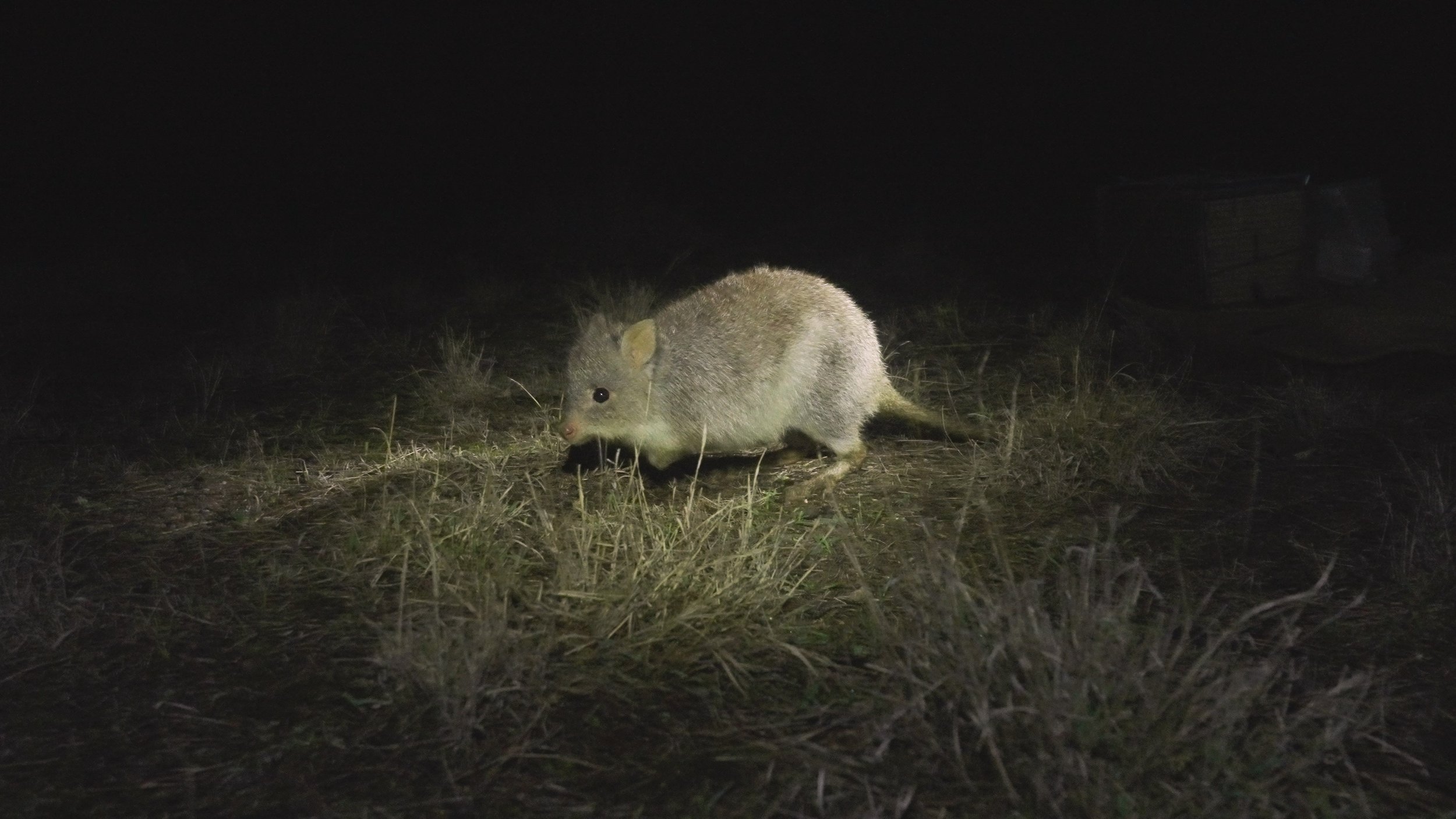
RUFOUS
BETTONG
The rufous bettong (aepyprymnus rufescens) is a solitary, nocturnal marsupial once widespread across southeastern Australia. Known for its digging and nest-building behaviours, this species plays a crucial role in soil health and biodiversity. While now extinct in Victoria, a thriving population at Odonata’s Mt Rothwell sanctuary represents a major step forward in conserving this unique species.
Physical description
The rufous bettong is the largest member of the Potoroidae family. It weighs up to 3.5 kg and measures between 70 and 80 cm in total length, with a standing height of around 35 cm. It has reddish-brown fur, a silvery belly, and a long, prehensile tail used for carrying nesting materials. Its pointed snout, triangular ears, and powerful hind limbs give it a distinctive, kangaroo-like appearance and movement.
Habitat and distribution
Historically found throughout Victoria, New South Wales, and Queensland, the rufous bettong is now limited to fragmented populations from Newcastle to Cooktown. Preferred habitats include open eucalypt forests, grassy woodlands, and nearby grasslands with sufficient cover for nesting and foraging. It is extinct in Victoria due to severe habitat loss, predation, and environmental change.
Behaviour and diet
Rufous bettongs are mostly solitary and forage at night, travelling up to 4.5 km in search of food. Their diet includes roots, tubers, fungi, seeds, grasses, and occasionally insect larvae or carrion. Their foraging behaviour aerates soil, helping with nutrient cycling and plant growth. During the day, they rest in dome-shaped grass nests built in hidden locations, often using their tails to carry materials.
Breeding
Breeding occurs year-round under favourable conditions. The gestation period is 22–24 days, with a single joey carried in the pouch for about four months. After emerging, the young stays near its mother for an additional month. Females can reproduce from five months of age and may produce up to three joeys each year. Lifespan is five to seven years in the wild and longer in captivity.
Conservation status
LC
NT
VU
EN
CR
EW
EX
Least Concern
Near Threatened
Vulnerable (NSW Biodiversity Conservation Act 2016)
Endangered
Critically Endangered
Extinct in the Wild
Presumed extinct
Threats
Predation by introduced species such as foxes and feral cats.
Habitat loss due to agriculture, land clearing, and urban development.
Inappropriate fire regimes.
Competition with invasive herbivores like rabbits and hares.
Climate change impacts on water and food availability.
Success in the field
In 2002, 108 rufous bettongs were translocated from Warrawong Wildlife Sanctuary in South Australia to Mt Rothwell Sanctuary. This founder population has since grown and is now considered self-regulating. The population at Mt Rothwell is the only known population in Victoria and represents a significant conservation success.
The 2019-2020 bush fires severely impacted wild populations, particularly in New South Wales.
Odonata is working toward expanding the Mt Rothwell populations genetic diversity to form the basis of establishing a number of connected populations to ensure long-term survival and resilience.

